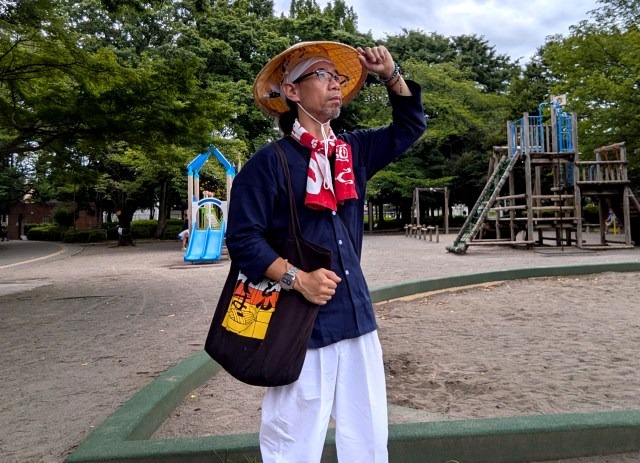
Let’s take it back to ’79… 1879.
When we last left Mr. Sato in search of summer relief, he had rediscovered the joy of traditional straw hats to keep his cranium cool. It made him realize that those who forget history are doomed to repeat it… except in this case where forgetting it makes you doomed not to repeat it.
Perhaps it’s better to say that: “Forgetting history makes you doomed to repeat the bad stuff while also dooming you to not repeat the good stuff at the same time.” This more accurate but less catchy proverb led Mr. Sato to search out more summer fashion secrets from Japan’s past.
He began by seeking out a rickshaw driver in Tokyo because they typically dress in classical fare to help set the mood while also spending a lot of time in the blazing heat during the summer months when tourism is peaking.
However, his rickshaw driver was blunt in telling him that the clothing they wear really doesn’t help all that much with the heat but recommended a shop to buy the stuff if Mr. Sato wanted to try anyway.
▼ Hantenya on Hisago Dori in Asakusa
In the end, he bought a koiguchi shirt for 9,800 yen (US$67) and a pair of dabo-gi pants for 4,300 yen. It wasn’t what his rickshaw driver had on, but since that guy said he suffers quite a bit anyway, our writer decided to go with his gut on this one.
▼ Koiguchi (left), Dabo-gi pants (right)
After all, Mr. Sato wasn’t planning on hauling people in a cart through the sultry asphalt of downtown Tokyo. There was a good chance these garments would do just fine for a casual stroll.
He gathered all the pieces of his ensemble starting with the koiguchi on top, with no undergarments. This was a gamble since the rickshaw driver explicitly said that sweat tends to make the koiguchi really clingy, but Mr. Sato has always been about taking risks and living on the edge.
That being said, he knew the importance of being prepared for risks and packed an extra pair of pants. This is because if his pants get soaked with sweat, the thin, white material would easily become see-through, opening our reporter up to criminal charges. Luckily, he had his udon/soba vending machine tote bag to carry a change of clothes in while keeping with the traditional style of the outfit.
▼ The bag was also handy for him to tie his ajirogasa straw hat to when not in use.
It’s always important to bring a towel with you and Mr. Sato selected a traditional one that dates back to 2017, when his favorite metal band Ningen Isu went on tour.
With that, our writer was ready to hit the hot streets and try his luck with classical heat prevention.
He took two steps into the scorching afternoon sun, quickly spun on his heels, and raced back inside. It wasn’t because he was hot though…
▼ “Almost forgot this.”
He had just forgotten his prayer beads. It just felt right with this clothing often used by pilgrims and besides, you kind of do have to pray to survive this weather.
And so, our intrepid reporter made his way out into the world, facing both the elements and judgmental stares of others.
The mighty lion surrounded by peonies on his back exuded the yin and yang of Mr. Sato’s masculine and feminine sides.
It reminded him of the song “Karajishibotan” (“Chinese Lion and Peonies”) which opens with the lyric, “If you weigh a sense of duty against human emotion, duty is heavier in this man’s world. My old friend Kannon knows my heart. On my back, the Chinese lion and the peonies roar…”
That’s exactly how Mr. Sato felt. He was honor-bound to see if this clothing would provide a respite from the relentless summer heat while also fighting the human emotion to run back home before everyone laughed at him. The old guy stretching his knee off to the side knew Mr. Sato’s heart. On his back, the Chinese lion and peonies meowed…
He plotted a walking route that would take about 26 minutes because anything longer than 30 would run the risk of heatstroke.
After completing his route, Mr. Sato felt that the cotton fabric of both the shirt and pants was very soft and smooth to the touch, making it extremely comfortable. It was also very airy and would be well suited for a mountain or breezy evening, but as the rickshaw driver had warned him, the thicker shirt absorbed sweat easily and gradually became very damp in the hot city. Luckily, because it was so thick, it didn’t become see-through from the wetness.
As for the pants, they were thin and loose enough that clinging from sweat wasn’t an issue. Their only weak point was the design of the front pocket which made it hard for him to pull his smartphone out of easily.
In the end, these clothes would probably work really well in an environment with even a bit of wind, but they failed to reach their full potential in the stagnant humidity of urban Tokyo.
After reaching this conclusion, Mr. Sato thought he would try injecting some modern tech too. He took out his trusty vest with built-in Peltier thermoelectric cooling plates and put it on top.
The effect was surprisingly good! The temperature of the sweat-soaked shirt was quickly lowered by the vest and felt downright brisk. The only downside was that it covered up the lion and peonies on his back, but they would always burn bright in his heart.
It just goes to show that those who forget the present are doomed to miss out on that good stuff too, so you know… try not to forget anything ever.
Photos ©SoraNews24
● Want to hear about SoraNews24’s latest articles as soon as they’re published? Follow us on Facebook and Twitter!
[ Read in Japanese ]

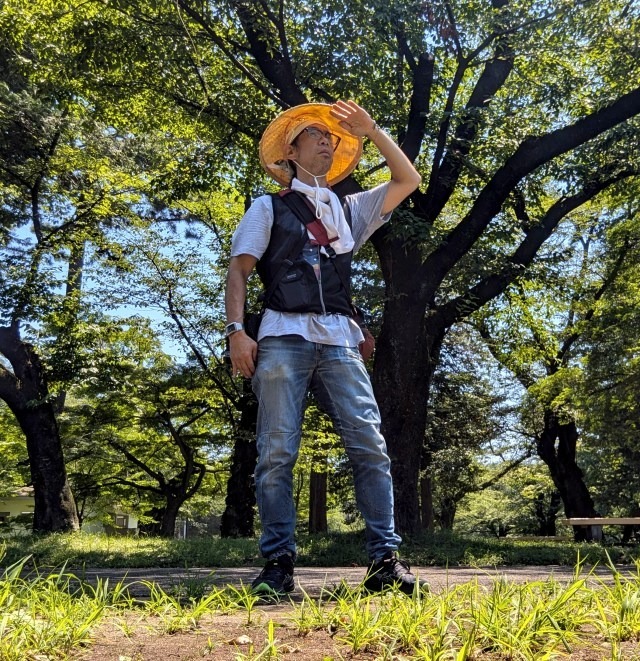
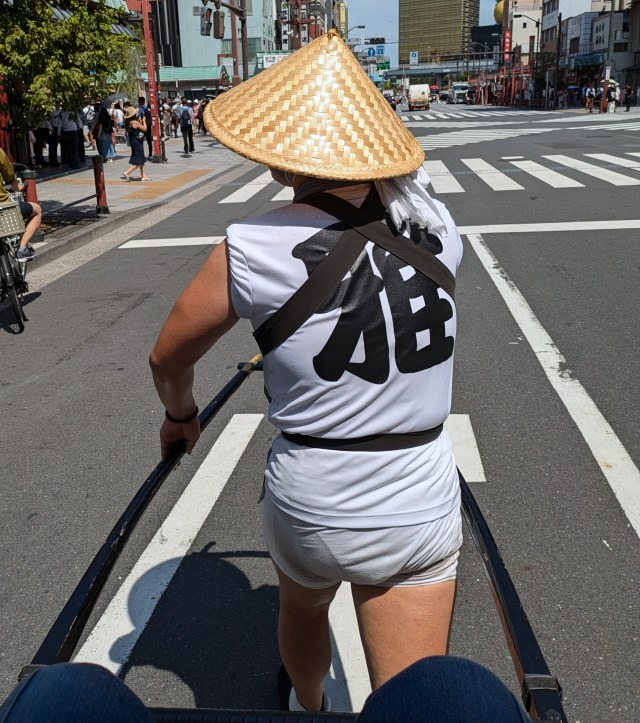
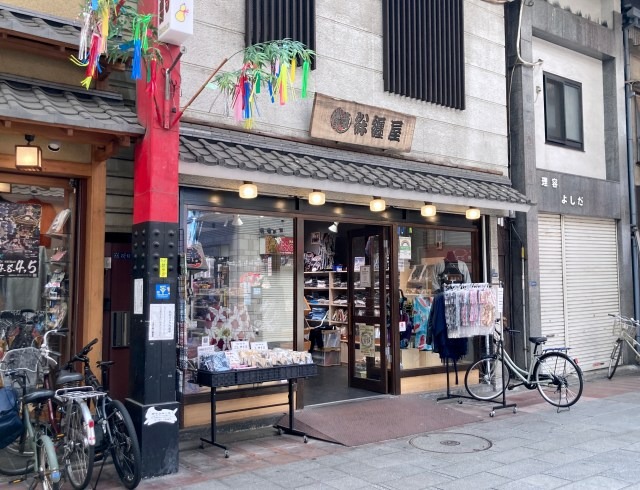
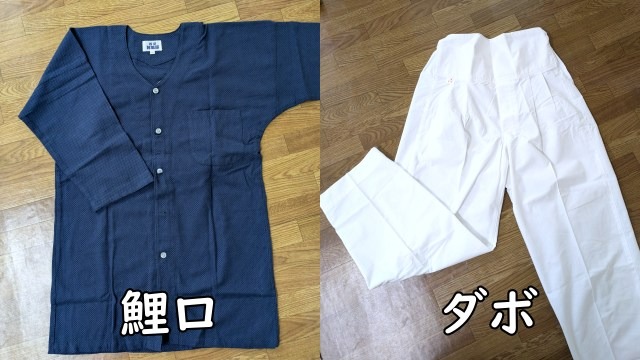
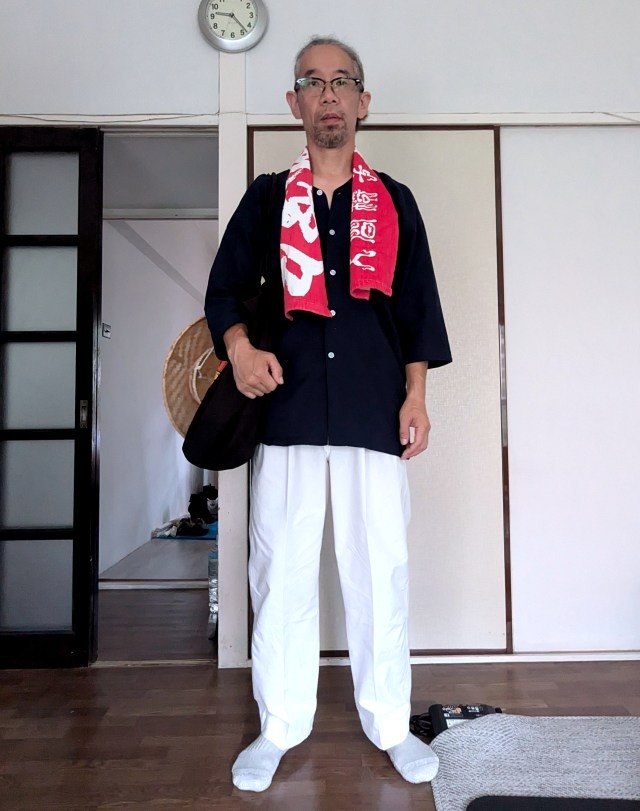
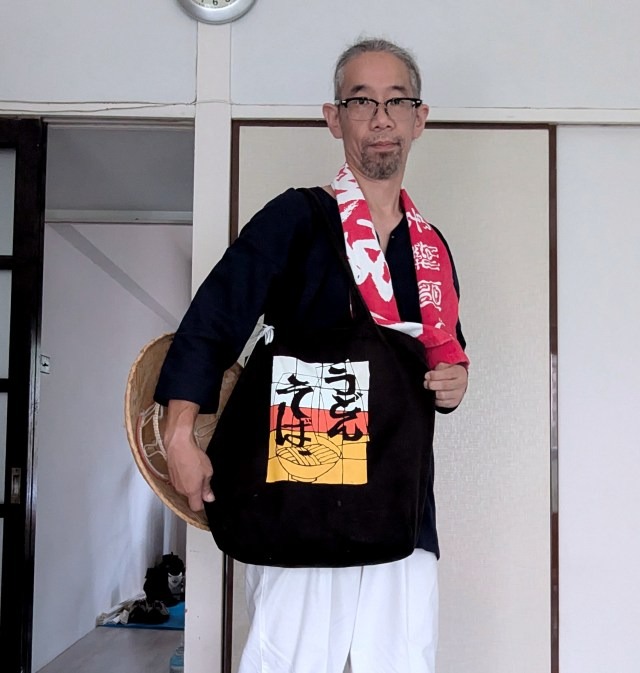
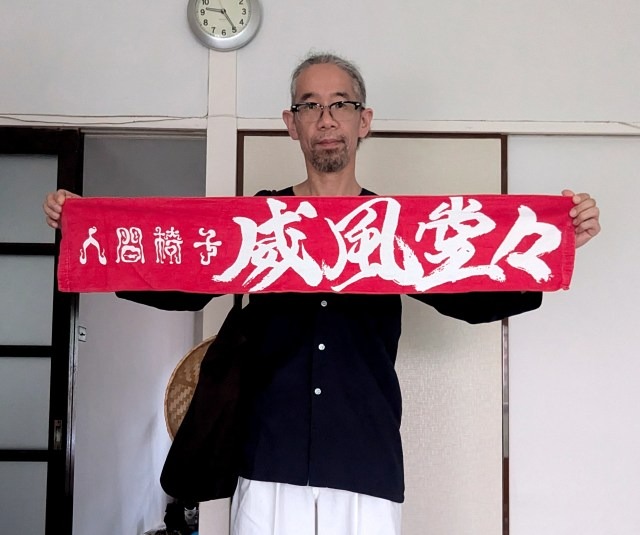


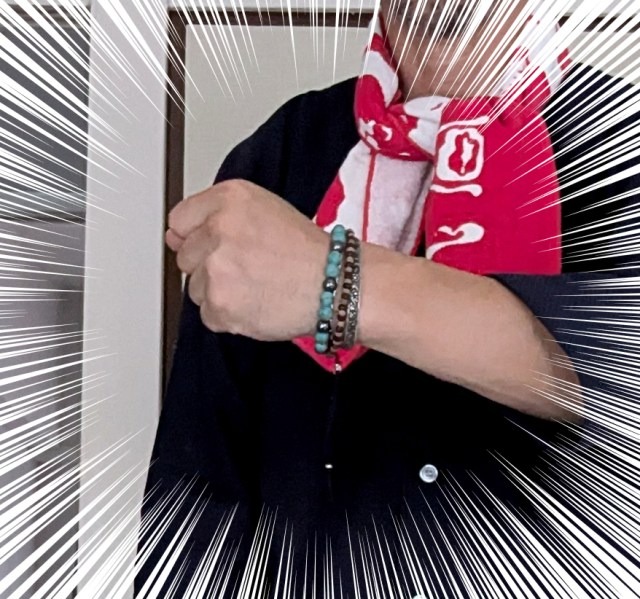
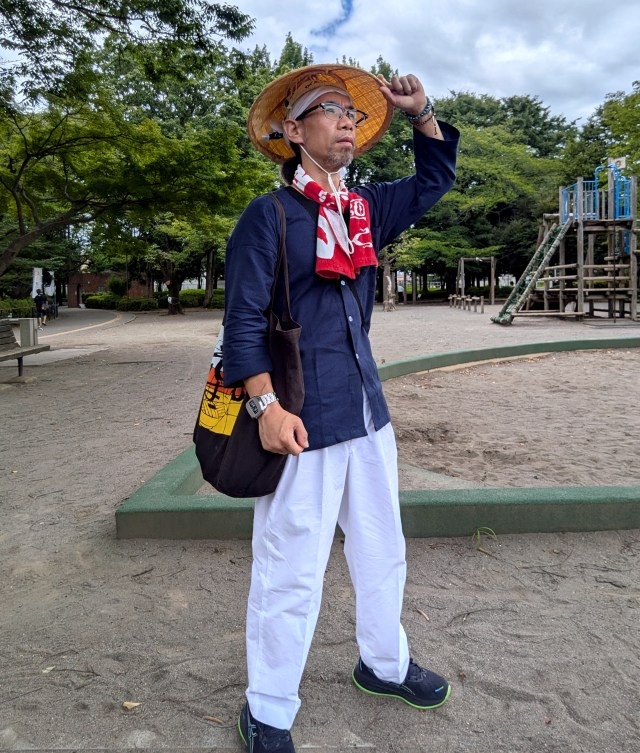
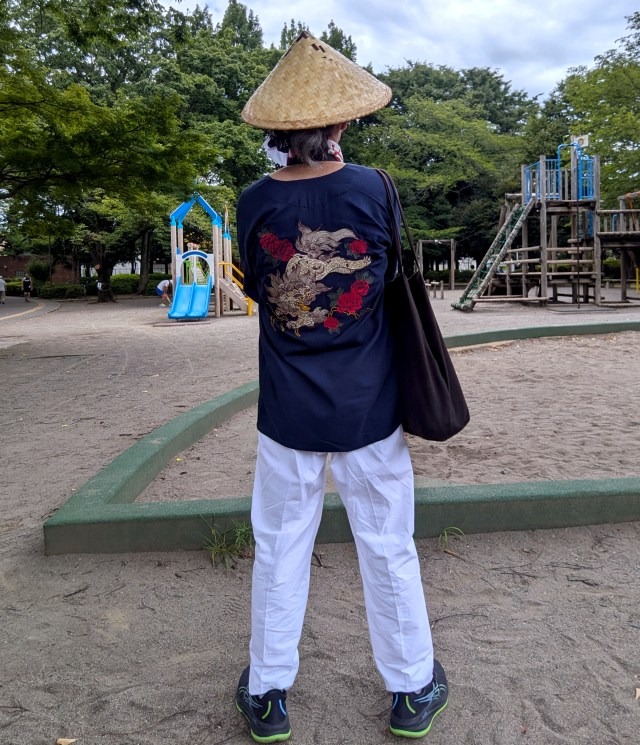
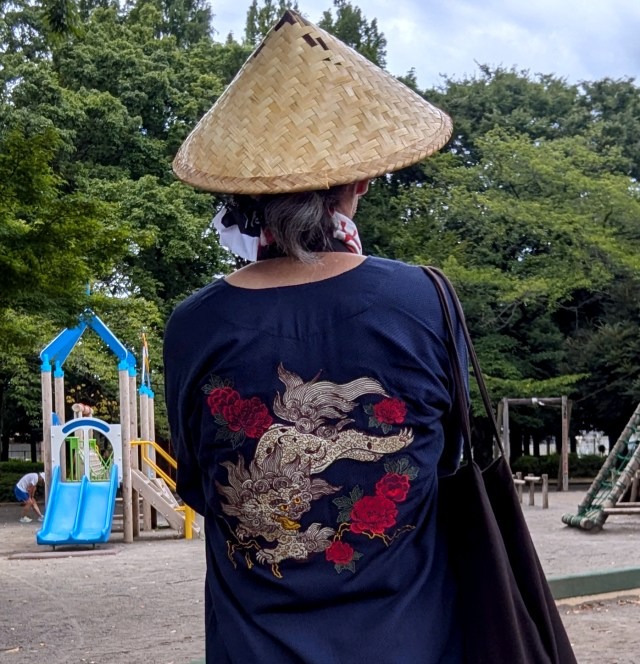

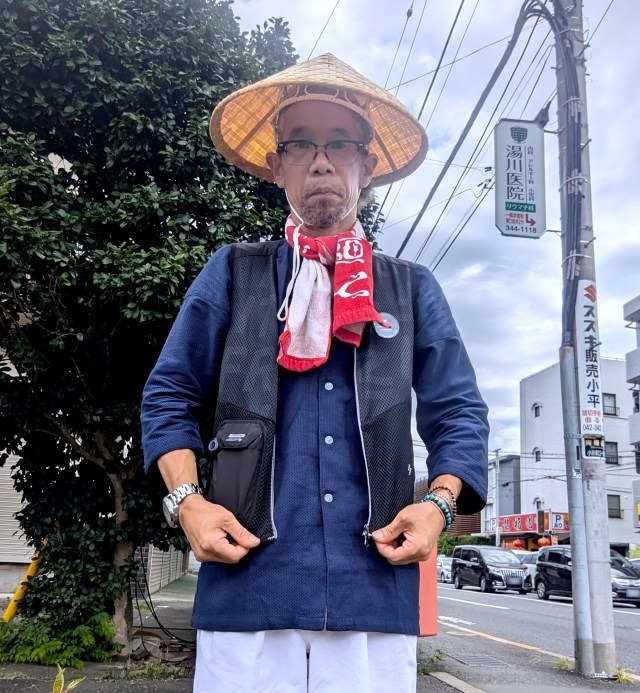
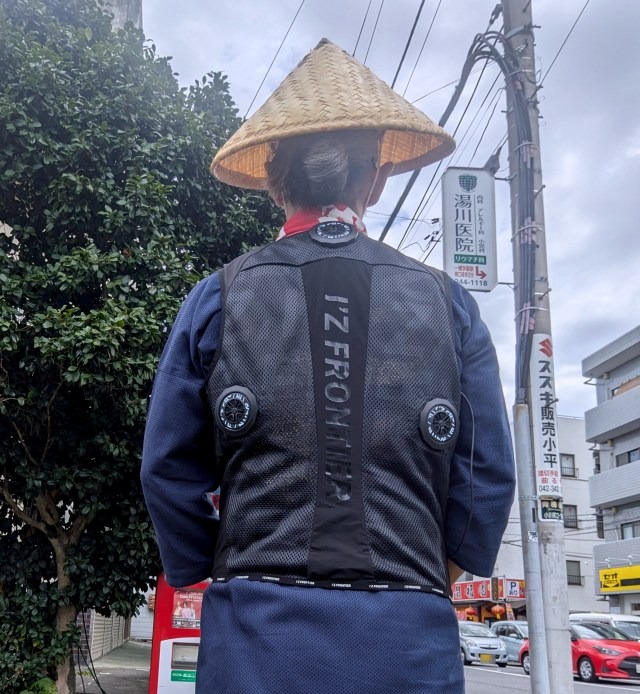
 How to dress for summer in Japan: Tips from a rickshaw driver in Asakusa
How to dress for summer in Japan: Tips from a rickshaw driver in Asakusa Maybe Japanese pilgrims were right about beating the heat all along
Maybe Japanese pilgrims were right about beating the heat all along Mr. Sato reminds us that when the going gets hot, the hot get straw hats
Mr. Sato reminds us that when the going gets hot, the hot get straw hats Mr. Sato uses cooling spray on his crotch, learns a valuable lesson
Mr. Sato uses cooling spray on his crotch, learns a valuable lesson Mr. Sato hits the streets to show off his new cardboard fashion!
Mr. Sato hits the streets to show off his new cardboard fashion! Rakuten randomly offers 58 New Year’s osechi feasts in Japan, but did we get a star or a dud?
Rakuten randomly offers 58 New Year’s osechi feasts in Japan, but did we get a star or a dud? We tried a Japanese egg steamer to achieve the perfect breakfast eggs without a stove
We tried a Japanese egg steamer to achieve the perfect breakfast eggs without a stove The Purple Lucky Bag from Village Vanguard is an extra-large waste of money
The Purple Lucky Bag from Village Vanguard is an extra-large waste of money Starbucks Japan ready to get Year of the Horse started with adorable drinkware and plushies【Pics】
Starbucks Japan ready to get Year of the Horse started with adorable drinkware and plushies【Pics】 Mysterious light-up rainy night-sound Totoro figure doesn’t actually show a scene from the anime
Mysterious light-up rainy night-sound Totoro figure doesn’t actually show a scene from the anime Let’s cook up some noodles measuring 3.6 meters (12 feet) in length!【SoraKitchen】
Let’s cook up some noodles measuring 3.6 meters (12 feet) in length!【SoraKitchen】 Japanese osechi New Year’s meal lucky bag gives us way more than we bargained for
Japanese osechi New Year’s meal lucky bag gives us way more than we bargained for Sanrio brings some smiles to Evangelion with new collaboration merch line【Photos】
Sanrio brings some smiles to Evangelion with new collaboration merch line【Photos】 Japan’s human washing machines will go on sale to general public, demos to be held in Tokyo
Japan’s human washing machines will go on sale to general public, demos to be held in Tokyo Dragon Quest Burgers and Slime drinks are coming to McDonald’s Japan【Video】
Dragon Quest Burgers and Slime drinks are coming to McDonald’s Japan【Video】 Hayao Miyazaki says Happy New Year to Studio Ghibli fans with new art for Year of the Horse
Hayao Miyazaki says Happy New Year to Studio Ghibli fans with new art for Year of the Horse Japanese beef bowl chain Sukiya’s 2026 Smile Box lucky bag basically pays for itself
Japanese beef bowl chain Sukiya’s 2026 Smile Box lucky bag basically pays for itself We found possibly the quietest Japanese-style hotel in Tokyo’s bustling Shinjuku district
We found possibly the quietest Japanese-style hotel in Tokyo’s bustling Shinjuku district Cup Noodle tries an authentic Jiro-style ramen, but something’s not quite right
Cup Noodle tries an authentic Jiro-style ramen, but something’s not quite right The best Starbucks Japan Frappuccinos we want to drink again in 2026
The best Starbucks Japan Frappuccinos we want to drink again in 2026 We revisited Sweets Paradise after a decade to see if Japan’s dessert buffet still delivers
We revisited Sweets Paradise after a decade to see if Japan’s dessert buffet still delivers That time Seiji called JASRAC to ask why he didn’t get paid royalties for his song being on TV
That time Seiji called JASRAC to ask why he didn’t get paid royalties for his song being on TV Japan’s oldest largetooth sawfish in captivity back on display in Mie Prefecture
Japan’s oldest largetooth sawfish in captivity back on display in Mie Prefecture Pizza Hut Japan’s hot lucky bags are perfect for a New Year’s pizza party
Pizza Hut Japan’s hot lucky bags are perfect for a New Year’s pizza party 7-Eleven Japan starts new temporary luggage storage service in over 300 branches
7-Eleven Japan starts new temporary luggage storage service in over 300 branches Disillusionment at Tsukiji’s tourist-target prices led us to a great ramen restaurant in Tokyo
Disillusionment at Tsukiji’s tourist-target prices led us to a great ramen restaurant in Tokyo Starbucks teams up with 166-year-old Kyoto doll maker for Year of the Horse decorations【Photos】
Starbucks teams up with 166-year-old Kyoto doll maker for Year of the Horse decorations【Photos】 Tokyo considering law requiring more trash cans following litter increase in heavily touristed area
Tokyo considering law requiring more trash cans following litter increase in heavily touristed area Tokyo’s Tsukiji sushi neighborhood asks tour groups to stay away for the rest of the month
Tokyo’s Tsukiji sushi neighborhood asks tour groups to stay away for the rest of the month Tokyo event lets you travel back in time, for free, to celebrate 100 years since Showa era start
Tokyo event lets you travel back in time, for free, to celebrate 100 years since Showa era start Japan may add Japanese language proficiency, lifestyle classes to permanent foreign resident requirements
Japan may add Japanese language proficiency, lifestyle classes to permanent foreign resident requirements Sanrio theme park in Japan announces plans to expand into a Sanrio resort
Sanrio theme park in Japan announces plans to expand into a Sanrio resort Stamina-destroying “Paralysis Noodles” are Tokyo’s newest over-the-top ramen innovation
Stamina-destroying “Paralysis Noodles” are Tokyo’s newest over-the-top ramen innovation Survey asks foreign tourists what bothered them in Japan, more than half gave same answer
Survey asks foreign tourists what bothered them in Japan, more than half gave same answer Japan’s deadliest food claims more victims, but why do people keep eating it for New Year’s?
Japan’s deadliest food claims more victims, but why do people keep eating it for New Year’s? We deeply regret going into this tunnel on our walk in the mountains of Japan
We deeply regret going into this tunnel on our walk in the mountains of Japan Studio Ghibli releases Kodama forest spirits from Princess Mononoke to light up your home
Studio Ghibli releases Kodama forest spirits from Princess Mononoke to light up your home Major Japanese hotel chain says reservations via overseas booking sites may not be valid
Major Japanese hotel chain says reservations via overseas booking sites may not be valid Put sesame oil in your coffee? Japanese maker says it’s the best way to start your day【Taste test】
Put sesame oil in your coffee? Japanese maker says it’s the best way to start your day【Taste test】 No more using real katana for tourism activities, Japan’s National Police Agency says
No more using real katana for tourism activities, Japan’s National Police Agency says Starbucks Japan reveals new sakura drinkware collection, inspired by evening cherry blossoms
Starbucks Japan reveals new sakura drinkware collection, inspired by evening cherry blossoms Updated cherry blossom forecast shows extra-long sakura season for Japan this year
Updated cherry blossom forecast shows extra-long sakura season for Japan this year How fashionable can you be with $82 at Forever 21? Mr. Sato finds out!
How fashionable can you be with $82 at Forever 21? Mr. Sato finds out! Mr. Sato goes discount women’s clothes shopping and discovers a shocking secret
Mr. Sato goes discount women’s clothes shopping and discovers a shocking secret New Uniqlo concept store opens in Shinjuku, so Mr. Sato gets himself a new workout outfit
New Uniqlo concept store opens in Shinjuku, so Mr. Sato gets himself a new workout outfit The epic tale of Mr. Sato’s new Zozosuit
The epic tale of Mr. Sato’s new Zozosuit Cosplay tragedy strikes Mr. Sato with the official Fist of the North Star Raoh cosplay set【Pics】
Cosplay tragedy strikes Mr. Sato with the official Fist of the North Star Raoh cosplay set【Pics】 SoraNews24’s Mr. Sato reveals the shocking truth: He’s not really Mr. Sato!
SoraNews24’s Mr. Sato reveals the shocking truth: He’s not really Mr. Sato! Mr. Sato searches for the 10 best pairs of underwear to go with his punch perm
Mr. Sato searches for the 10 best pairs of underwear to go with his punch perm Mr. Sato goes fishing for compliments with the new Harajuku fashion: A fishing vest?!?
Mr. Sato goes fishing for compliments with the new Harajuku fashion: A fishing vest?!? We ask a Harajuku street fashion merchant to dress Mr. Sato for under $100 【Photos】
We ask a Harajuku street fashion merchant to dress Mr. Sato for under $100 【Photos】 Mr. Sato’s half-assed Halloween costume will get you full marks on the streets of Shibuya【Photos】
Mr. Sato’s half-assed Halloween costume will get you full marks on the streets of Shibuya【Photos】 Can Mr. Sato freeze this cooling face mask just by shaking it?【Video】
Can Mr. Sato freeze this cooling face mask just by shaking it?【Video】 Mr. Sato visits newly opened gyoza restaurant, stuffs himself full of delectable dumplings
Mr. Sato visits newly opened gyoza restaurant, stuffs himself full of delectable dumplings Mr. Sato participates in beer company’s mysterious “escape game”
Mr. Sato participates in beer company’s mysterious “escape game” Mr. Sato tries out ‘the Life Ruiner’, a wearable kotatsu – will it ruin his life?
Mr. Sato tries out ‘the Life Ruiner’, a wearable kotatsu – will it ruin his life? Mr. Sato takes a sperm test, passes with flying colors
Mr. Sato takes a sperm test, passes with flying colors Mr. Sato reveals his new suit jacket’s hidden, convertible secret
Mr. Sato reveals his new suit jacket’s hidden, convertible secret
Leave a Reply